Red-tide awakening: How Florida's environmental woes could hurt GOP's Scott in Senate race
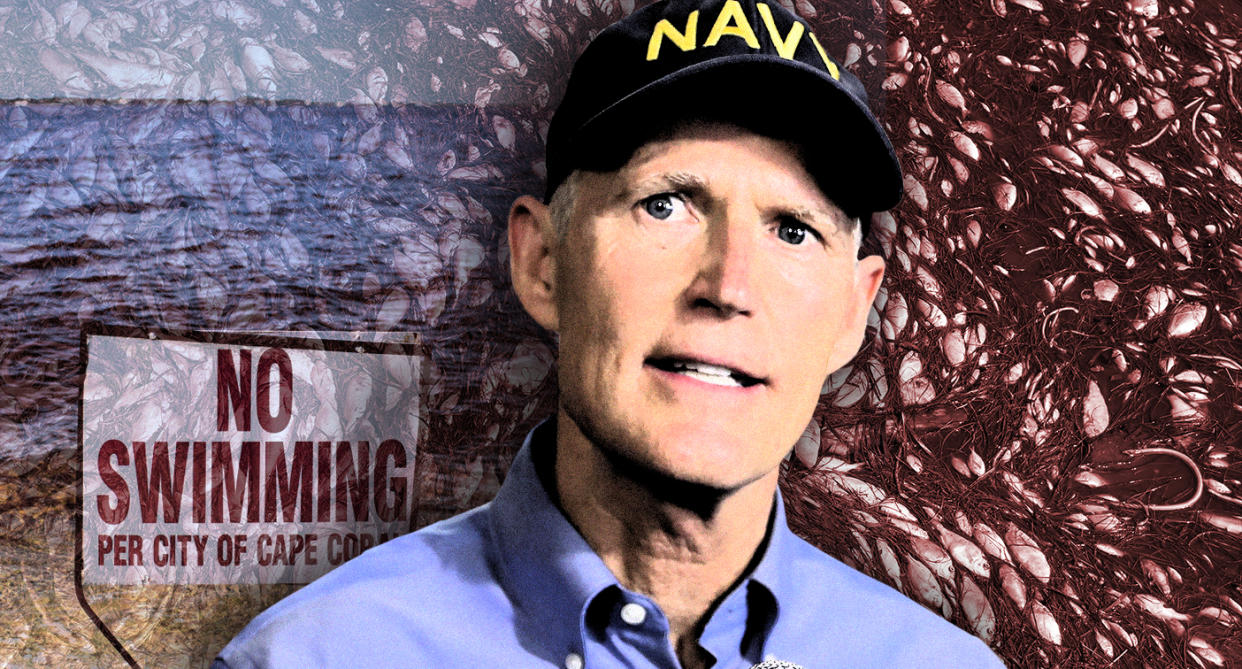
VENICE, Fla. — By 8:30 a.m. last Monday, the temperature on the fishing pier had already risen above 90 degrees. The heat index, according to a long-suffering FM radio weatherman, was making it feel 10 degrees hotter. On the bright side, the rancid stench born of a yearlong red tide, and the abundance of dead sea life it left behind, had dissipated. But the few beachgoers lingering at the shoreline still seemed uncertain whether to enter the pea-green, murky Gulf water for a swim.
Wearing swim trunks and a floppy sun hat and holding a fishing pole, Rob Merlino, 54, watched the would-be bathers from the pier, sympathetic to their dilemma.
“There were days when they were saying, ‘The water’s fine. The red tide is gone,’ and it was brown as poop out here,” Merlino told Yahoo News, going on to describe the burning sensation that an aerosolized Karenia brevis algae bloom causes when inhaled. “You couldn’t breathe!”
A self-described “right-wing libertarian type,” Merlino grew so incensed over what he saw as Gov. Rick Scott’s inadequate response to the red tide that has plagued Florida’s Gulf coast for an entire year that on Sept. 17, he decided to send him a message.
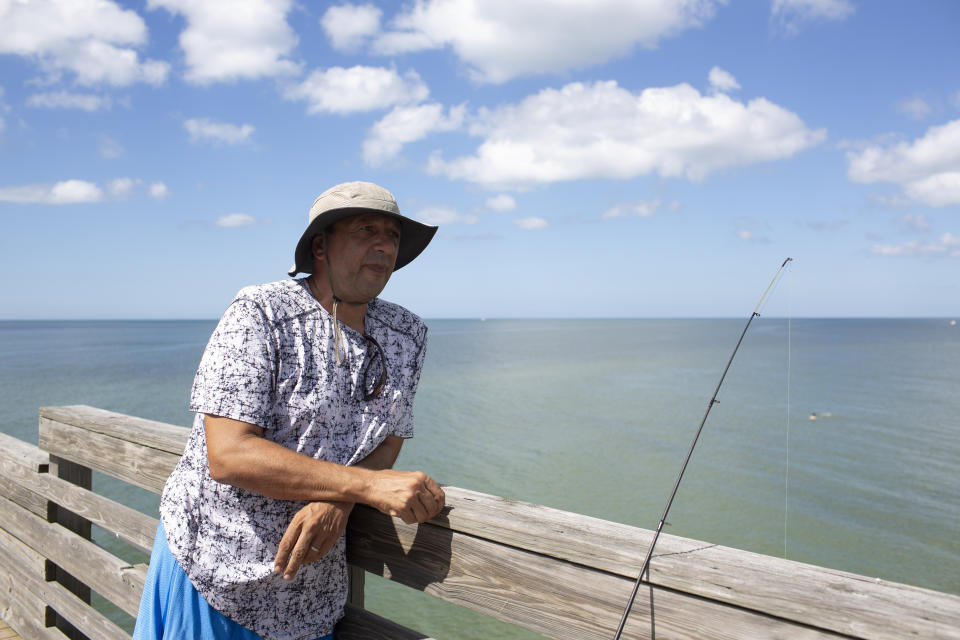
“I got an email from the Republican Party saying Rick Scott’s coming to Venice,” Merlino said. “The day he came it was really smelly. So I put it out there, ‘Hey, let’s go say hello.’ Before you know it, there were probably about 300 people there.”
The impromptu demonstration at a Cuban restaurant called Mojos effectively chased Scott from the campaign trail and was replayed for days in cities and towns that could well decide the Florida Senate race between the term-limited governor and incumbent Democratic Sen. Bill Nelson.
“It impacted a few media markets where swing voters live — Tampa, Fort Myers, and West Palm Beach,” Democratic strategist Steve Schale told Yahoo News. “There are voters who have voted for both Nelson and Scott in those markets.”
The origins of Karenia brevis, the toxic bacteria better known as red tide, is something of a scientific mystery. But one fact has been established: After the Army Corps of Engineers released water tainted with a different microorganism, blue-green algae, from Lake Okeechobee in the wake of Hurricane Irma last fall, the red tide, which can stain the ocean a rusty-brown hue, got much worse.

Irma had pummeled the south-central part of the state, stirring up fertilizer runoff and agricultural pollution that settles to the bottom of Lake O, as locals know it. When the nitrogen-rich water reached the Gulf of Mexico from the Caloosahatchee River, it effectively fertilized the red tide, depleting the normally turquoise waters of oxygen and causing a mass die-off of fish, turtles, dolphins and manatees over thousands of square miles. The animals then washed ashore in areas as far-flung as Naples and St. Pete Beach.
With anger rising in communities along the Gulf Coast, Nelson went on the offensive, blaming Scott’s policies for the mess that has resulted in major losses for the tourism industry.
“He has systematically, in his eight years as governor, systematically disassembled the environmental agencies of this state. He’s drained the water management districts of funding,” Nelson proclaimed during the candidates’ first debate in early October. “You see the result. You put pollution in the water, it will grow the algae in the heat of summer. And then when the algae goes down the rivers and mixes with a bacteria known as red tide, it supercharges that.”
Like President Trump, Scott has long favored scaling back government regulations he deems harmful to business. To that end, he cut $700 million from water management budgets in 2011, and a year later he signed a repeal of a law intended to prevent pollution by requiring inspections of septic tanks every five years, saving residents the cost of fees.
As Democrats sought to link the red tide to Scott’s environmental record, the governor hammered Nelson in an ad pointing out that the senator had vowed to clean up Lake Okeechobee back in 1990.
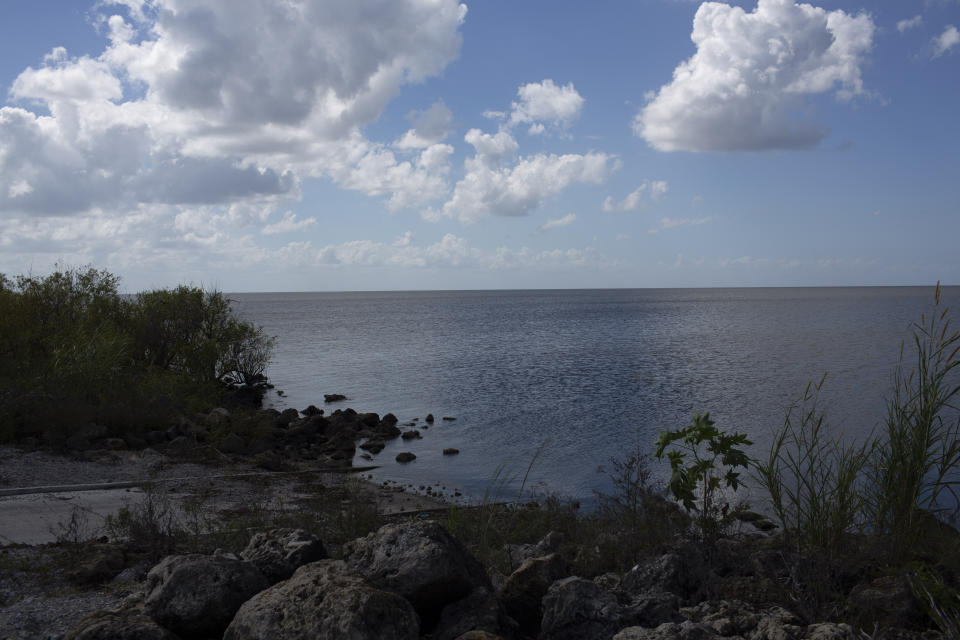
The same week that Merlino held his protest in the parking lot at Mojos, polling in the Senate race began to tilt in Nelson’s direction. Since then, Scott’s campaign has sought to highlight what it says are his efforts to protect Florida’s environment.
In a statement emailed to Yahoo News, Lauren Schenone, Scott’s press secretary, said the governor helped establish “the most comprehensive nutrient pollution standards in the nation” and noted that environmental funding in Florida had risen by nearly $1 billion since the governor was elected.
“Clearly, Bill Nelson has no choice but to continue to use misleading and negative attacks in order to hide the fact that after nearly half a century as a career politician, he still has no accomplishments to run on,” Schenone said.
Democratic strategist Schale, however, thinks the duration of this year’s red tide has left Scott vulnerable.
“These voters have been living with algae for many years now, and for Scott, who talks about getting things done, the fact nothing has changed on algae and red tide goes right at his strength,” Schale said.
The epic red tide, as well as Hurricane Michael’s devastating blow to the Florida Panhandle, have propelled the environment to the forefront of issues facing Florida voters. In his Oct. 1 endorsement of Nelson, former President Barack Obama singled it out as key factor for his support of the senator.
“The people of Florida are well served by Sen. Nelson and his steadfast support of public education, advocacy for expanded access to affordable healthcare, and strong record on protecting the environment,” Obama wrote.
In an Oct. 9 tweet, Trump countered the claim that Nelson was a better choice when it comes to environmental protection, portraying Scott as “relentless in securing the funding to fix the algae problem from Lake Okeechobee.”

But Florida’s ongoing red tide has meant that Scott can no longer count on the support of voters like Merlino.
“I would never vote for someone like Bill Nelson. I still may not vote for him, but I’m not voting for Rick Scott,” Merlino said. “His policies made this a lot worse.”
As if on cue, a fish hits his line, making a splash in the murky water. “It was a snook!” Merlino exclaimed, jerking back his pole, but all that came out of the water was a weightless line. “He got my bait and rig.”
That there are still fish to catch is a relief not only to Merlino but to Venice Mayor John Holic.
“By the time the Fourth of July came, the beaches were quite littered with dead fish and sea life, dolphins, manatees, turtles. It wasn’t a pleasant sight at all,” Holic said in an interview in his office in city hall.
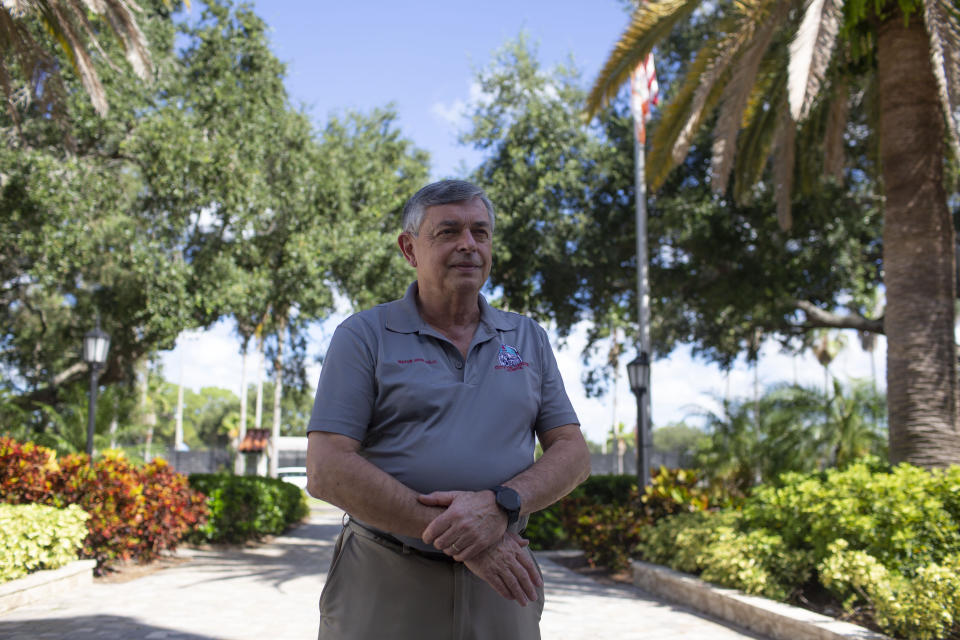
A former Democrat who left the party to become an independent, Holic counts himself as among the voters in Florida dismayed over environmental apathy at both the national and local levels.
“It troubles me tremendously, when you look at the progress we’ve made in the past — and that progress was fought for — and then to have our leaders turn around and arbitrarily do away with things like the Paris Accords, or Rick Scott cutting funds for water districts,” Holic said.
Not prioritizing environmental protection, Holic says, has hurt his city financially, with businesses reporting summertime losses upward of 60 percent.
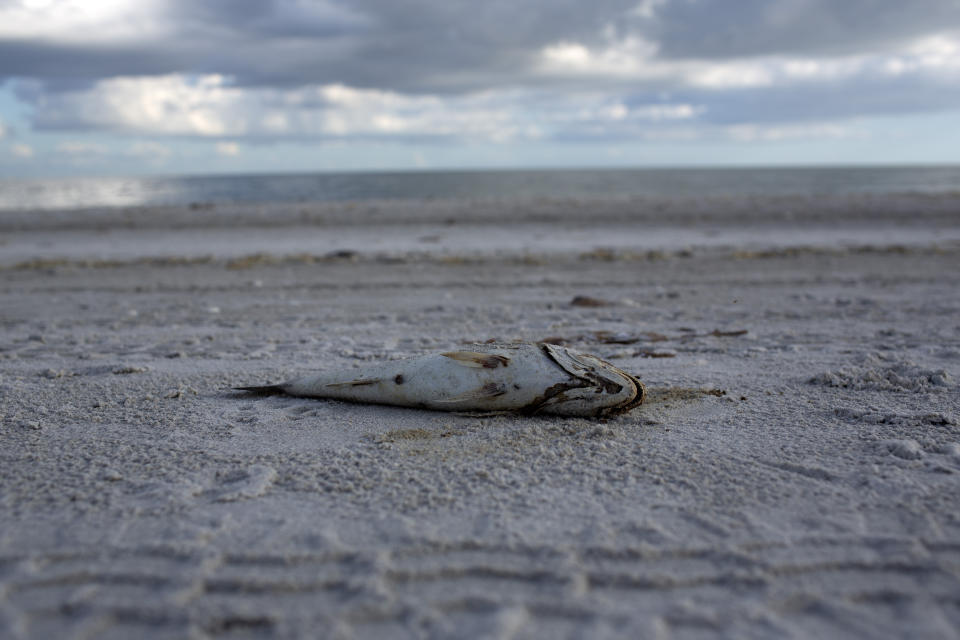
At Sharky’s, an open-air seafood restaurant at the base of the Venice pier, the economic impact of this year’s red tide was as difficult to ignore as the smell.
“The big issue we had with this year was the prolonged exposure to it,” Sharky’s owner, Justin Pachota, 38, said. “We’ve seen it come and go for a couple of weeks at a time, but nothing like this year when it just stuck around and created a larger fish kill.”
‘An epicenter for red tides’
Heather Barron, the medical and research director at Sanibel Island’s Clinic for the Rehabilitation of Wildlife (CROW), watched attentively as a skinny double-crested cormorant staggered along on the floor of an examining room. The bird, like 490 others the clinic has treated for red tide exposure since last October, suffered from ataxia, a loss of control of motor functions. Most of the animals brought in to the clinic, 90 miles south of Venice, have exhibited similar symptoms, in addition to diarrhea, disorientation and lethargy.

“Sanibel has always been an epicenter for red tides. You can go back in the literature for a couple hundred years and see it documented. But I definitely think it’s getting worse,” Barron said. “It seems pretty obvious: They increased the flow on the west side, and we get a red tide. They decrease the flow; it gets better. They increase the flow to the east coast, which normally doesn’t get red tide, and it immediately gets a red tide.”
Citing CROW’s status as a tax-exempt organization, Barron declined to assess political blame for this year’s red tide. But she’s quick to add that more people need to pay attention to what’s happening to Florida’s environment.
“Americans, in general, have a tendency to put their faith in the government and say, ‘Yeah, but the government protects us from anything that would be bad for us, right? They wouldn’t let our waters poison us.’ But that’s completely not true,” Barron said.

Environmental groups like the Sierra Club are urging Florida voters to connect the dots on the threats facing the state. Besides experiencing pollution-fueled red tide, it is one of the places in the country most vulnerable to the effects of climate change, including rising sea levels and stronger tropical storms.
“With the hurricanes, not only are they becoming stronger, the season is becoming longer,” Frank Jackalone, the Sierra Club’s Florida director, said while standing in front of the TradeWinds Island Grand Resort, one of many hotels fronting a nearly empty St. Pete Beach, 60 miles north of Venice. Though the red tide here had dissipated in the days before Hurricane Michael roared past on its way to Mexico Beach, the storm pushed it back on the beaches, bringing dead sea life with it.
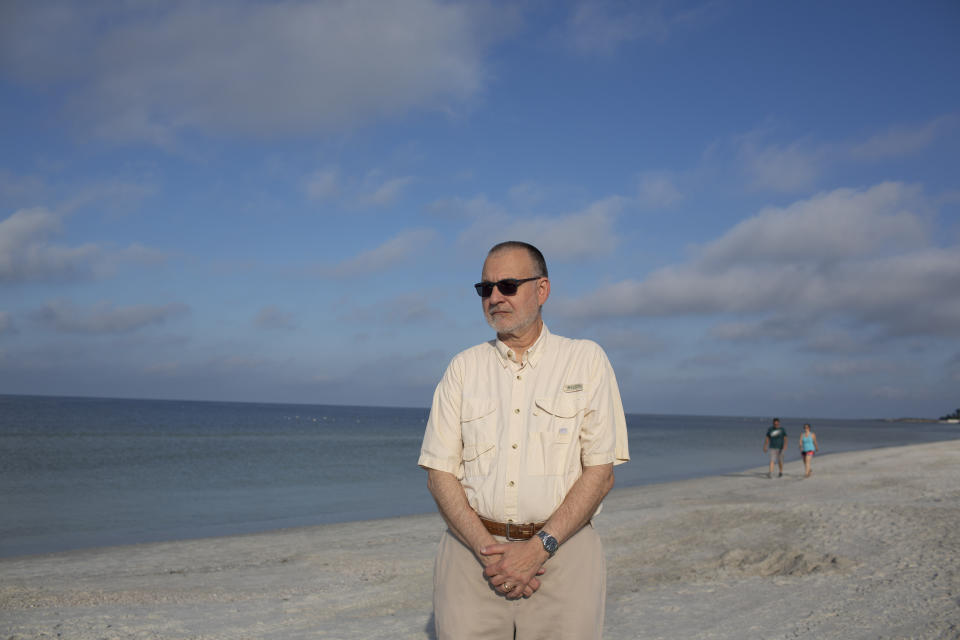
“Hurricane Michael, which was the third-strongest hurricane to make landfall in the continental United States, was the strongest hurricane ever to make landfall in the continental U.S. in the month of October. That followed Hurricanes Maria and Irma, which broke all records last year. It’s very, very clear then that as temperatures increase, not only are the storms going to become stronger, now you’re going to get major hurricanes in October, maybe November. With temperatures staying high all year round, all bets are off.”
The Florida Chamber of Commerce has endorsed Scott, citing his record of cutting taxes and “eliminating and/or reducing thousands of regulations,” but the Sierra Club, which is backing Nelson, has launched a campaign to label Scott as “Red Tide Rick” ahead of the midterm election.

“Climate change and the red tide issue, I think, are going to be major factors in this election,” Jackalone said. “What is starting to surface is that issues of climate and natural disasters are tied in to the economy as well.”
Julie Wraithmell, the executive director of Audubon Florida, agrees with Jackalone that the state’s economy and its environment are inextricably connected. If there is a silver lining to the red tide crisis, Wraithmell says, it may be that it brought that point home to many people in the state.
“In Florida our ecology is our economy. I think at this specific moment in time, that has snapped into very sharp focus for Floridians, voters and candidates alike,” Wraithmell said in a phone interview. “I’m heartened by the fact that Floridians are very awake right now. People are frustrated. They’re concerned about the effects that they’re seeing, and they want to see both action and answers. What I’m interested in is making sure that they and their representatives have the best available science to make the choices that are necessary to get us back on the rails.”
For Nelson, that message has gotten through.
“Listen to the scientists at the National Hurricane Center. Listen to the scientists at the National Weather Service and they’ll tell you that the earth is heating up and the ferociousness of these storms is as a result in part of that heating of the earth,” the senator said in an interview with CNN last week.
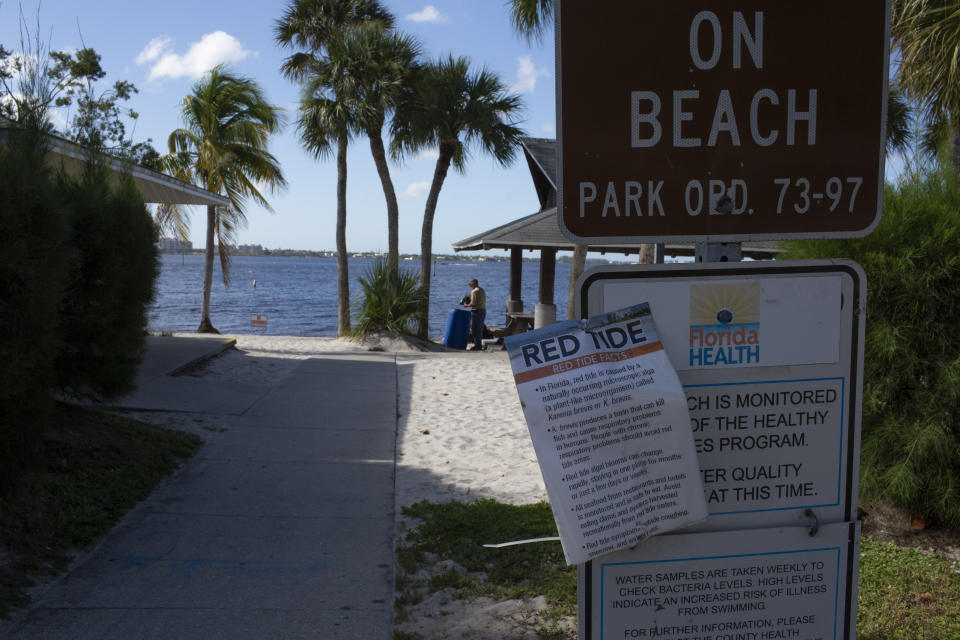
Scott, by contrast, tends to avoid using the terms “climate change” or “global warming” or engaging with the causes of those phenomena. Asked by Yahoo News whether Scott believed the scientific consensus that human activity was largely responsible for rising temperatures, and, if so, what he would do about it if elected to the Senate, his campaign responded by citing his record of dealing with the effects of climate change.
“Governor Scott is focused on solutions, which is why he has invested hundreds of millions of dollars to address sea-level rise, including over $300 million for flood mitigation, coastal resiliency, beach nourishment and coral reef protection,” Schenone told Yahoo News.
Of course, if current scientific projections prove correct about sea-level rise, the cost of mitigation will rise well into the billions. Even though the state could well become the poster child for what climate change may bring, Schale believes the jury is still out on exactly how much the environment will resonate in the state in the midterm election.
“Climate here means different things to different people. For some, it is an environmental issue; for others, like those impacted by red tide, it is an economic issue; and for others yet, like those in Miami Beach and towns like my hometown, St. Augustine, it is a problem where flooding is stressing infrastructure,” Schale said. “I don’t know that climate on its own is a winnable issue — but candidates who are able to draw the connection between climate and these other issues can make climate a winning issue — as Nelson has done with red tide.”

_____
Read more Yahoo News midterms coverage:
Indiana Sen. Donnelly backs border wall in new ad, and GOP pounces
In Senate race, GOP Rep. Blackburn accuses her opponent of being a Democrat
Will Rick Scott’s playbook withstand a potential Democratic wave?
Facing doubts from women voters, Tennessee’s Phil Bredesen opens up about an assault on his wife



